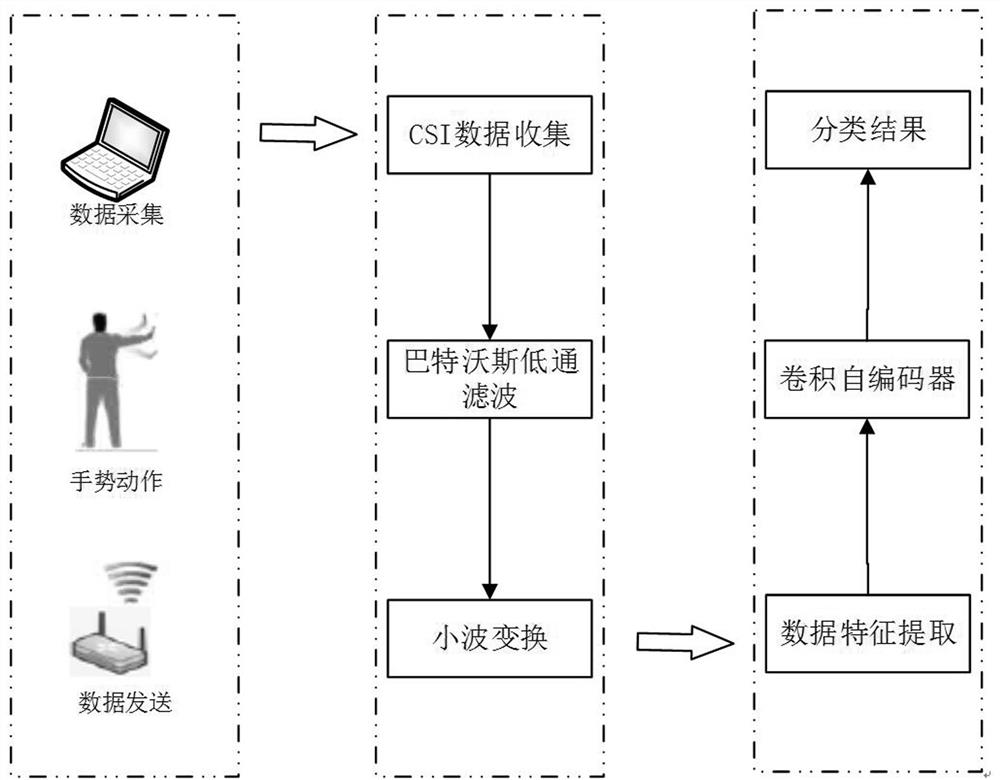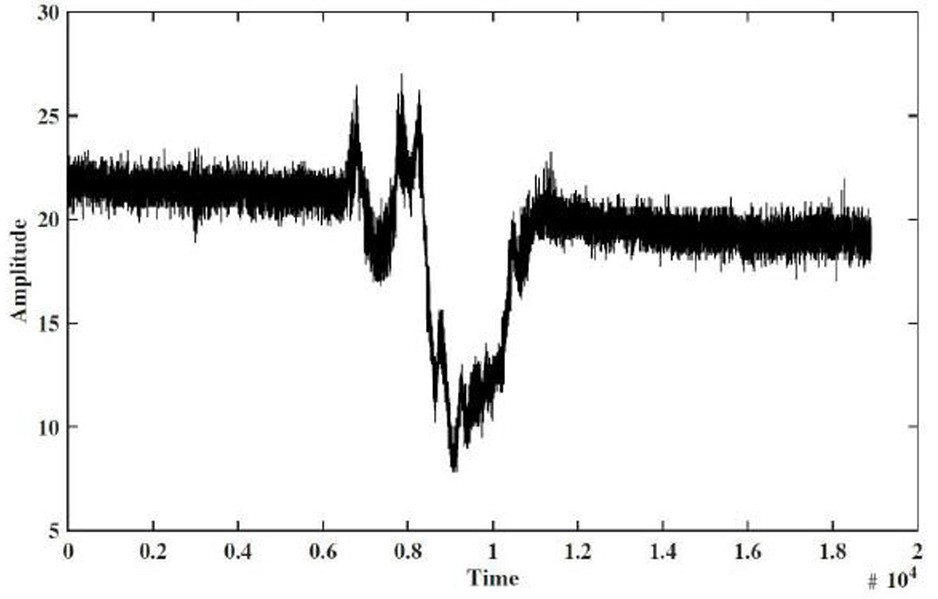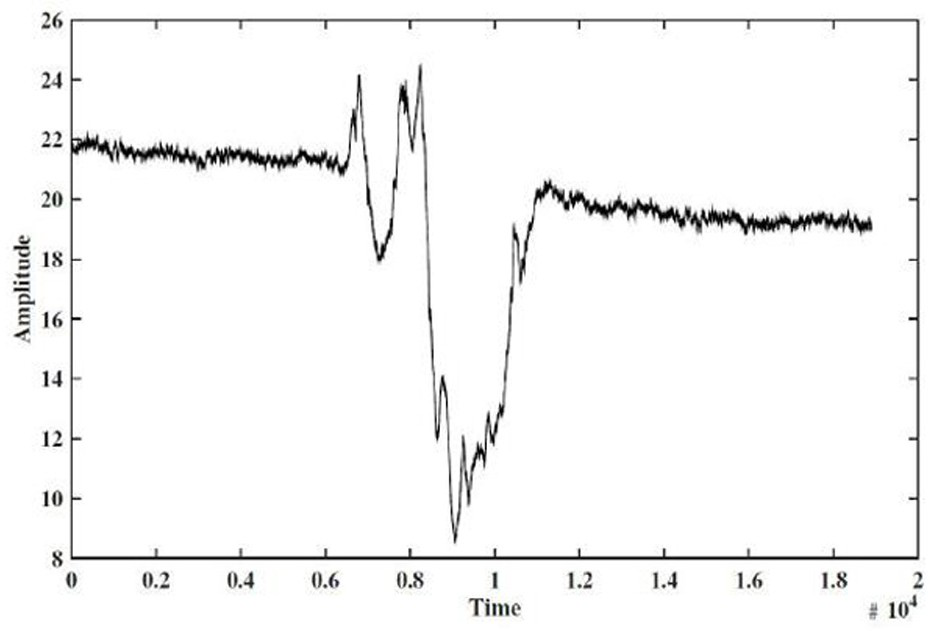A gesture recognition method based on wifi signal
A gesture recognition and gesture technology, applied in the field of gesture recognition based on WiFi signals, can solve the problems of cumbersome data denoising and training process, privacy problems hindering popularization and implementation, and wearable devices being expensive to carry, etc., and achieves convenient gesture feature extraction and classification. Recognition, superior performance, high recognition effect
- Summary
- Abstract
- Description
- Claims
- Application Information
AI Technical Summary
Problems solved by technology
Method used
Image
Examples
Embodiment
[0077] The experimental environment of this embodiment is an ordinary TP-LINK-WDR5620 router with one antenna and a Lenovo notebook computer equipped with an Intel5300 wireless network card with three antennas. (Signal receiving end) perform digital gestures from 0 to 9 in turn, and then use the CSI Tool software to extract the 20MHz bandwidth CSI data on all 30 sub-carriers at the center frequency of 2.4GHz. This data is Ntx×Nrx× A 3-dimensional complex matrix of 30, Ntx represents the number of antennas at the transmitting end, and Nrx represents the number of antennas at the receiving end, so the original data becomes a 3×30 2-dimensional complex matrix after dimensionality reduction; find the amplitude of this CSI complex matrix, and get a 2-dimensional CSI amplitude matrix; denoising the CSI amplitude matrix through Butterworth filtering and wavelet transform, the original CSI subcarrier original amplitude is as follows figure 2 shown, after low-pass filtering as image...
PUM
 Login to View More
Login to View More Abstract
Description
Claims
Application Information
 Login to View More
Login to View More - R&D
- Intellectual Property
- Life Sciences
- Materials
- Tech Scout
- Unparalleled Data Quality
- Higher Quality Content
- 60% Fewer Hallucinations
Browse by: Latest US Patents, China's latest patents, Technical Efficacy Thesaurus, Application Domain, Technology Topic, Popular Technical Reports.
© 2025 PatSnap. All rights reserved.Legal|Privacy policy|Modern Slavery Act Transparency Statement|Sitemap|About US| Contact US: help@patsnap.com



